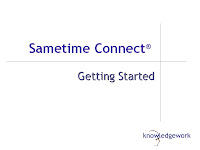Screencast tutorial update
We haven't had much to report as we have been working tirelessly to meet a deadline for a series of screencasts. Tomorrow, we should have one of them ready for the client and then move to the second one. Alas, the only news I've been able to share is screencast related - Using Techsmith's Camtasia and Snagit software for this project has been an enjoyable experience. I was glad to join the screencasting group on Facebook and plan to add some podcasts/screencast when I have some time to do non-client work. We will be presenting a family video for my mother's birthday bash in Greece later next month (shh, I hope she isn't reading my blog before then) and perhaps can include some clips from that.
Will try to join back with you soon with more DITA news. To date, I have received word from a salesperson at Ixiasoft and she has reported that DITA is breaking ground with medium-sized enterprises, even with, and I quote, "documentation teams of 3-4 writers". I will be looking at the finer points of Ixiasoft's CMS (content management system) in the fall. No question that CMS is the way to go to leverage all of DITA's benefits.

